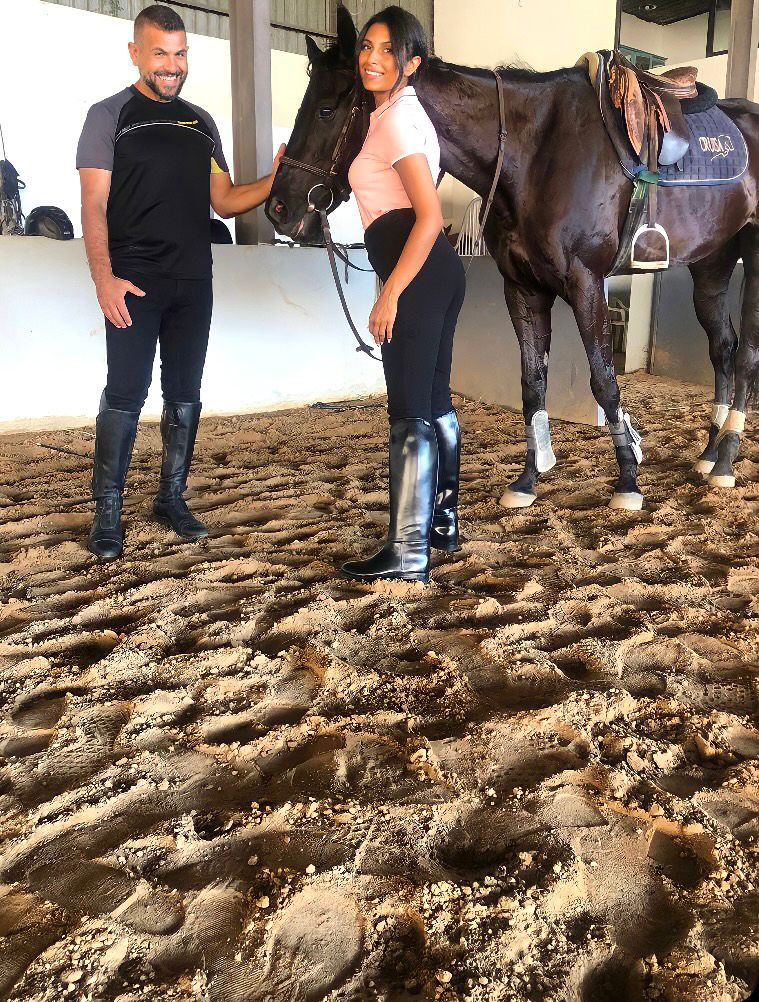
Migraines are much more than a headache. They are often most excruciating and incapacitating for the more than 40 million Americans living with this condition. For Malak Fouani PhD, a postdoc working in the lab of Carlene Moore, PhD, migraines--and their origins--are also a mystery and intellectual puzzle that she hopes to solve one day.
In this week’s Spotlight interview, Fouani talks to us about her work conducting experiments to understand the role transient receptor potential (TRP) ion channels in neurons in the brain in how brains develop--and how they may lead to future therapies. She also talks about how her curiosity about the nature of consciousness and her desire to advance human knowledge led her to a career in neuroscience. Finally she shares how her passions for tennis and horseback riding both provide balance in her life and connect her with her father, a friend and source of inspiration in her life.
What are your current responsibilities as a postdoctoral associate in the lab of Carlene Moore, PhD? What does your typical day look like?
As a postdoctoral associate in our neuroscience lab, my primary responsibilities involve conducting experiments related to our research focus on the role of TRP channels in the pathophysiology of migraines. A typical day begins with planning experiments and preparing lab equipment. Throughout the day, I conduct behavioral and molecular experiments, collect data and analyze results. Collaboration and teamwork are essential as I work closely with lab colleagues to achieve our research goals.
What project(s) are you currently working on in the Moore lab, and how will that work help us better understand or treat headaches and chronic pain?
I am currently working on two projects:
- Unraveling TRPV4-dependent signaling in satellite glial cells and its implication in migraine pain mechanisms
- The mechanism of action of botox and how it regulates trp channel expression in murine migraine models.
This research aims to deepen our comprehension of TRP channels central role in trigeminal ganglion (TG) satellite glial cells that express CGRP receptors, specifically in triggering migraine episodes and it provides crucial insights into the molecular basis of migraine. The study of TRP (Transient Receptor Potential) channels can potentially help in the development of treatments for migraine through a better understanding of migraine pathophysiology and the identification of potential therapeutic targets. For example
- Identification of drug targets: studying the role of specific TRP channels in migraine is essential, researchers can identify molecules or compounds that modulate these channels and possibly lessen migraine symptoms.
- Reducing sensory sensitization: Targeting TRP channels may help decrease neuronal sensitization and lower pain thresholds, providing relief of pain on migraine patients.
How and when did you first get interested in neuroscience?
After completing my bachelor's degree, I was drawn to neuroscience when I grasped its profound implications for understanding the convolutions of the human brain. This fascination led me to apply for a master's program in neuroscience at the American University of Beirut, then attaining a PhD in The Department of Biomedicine, Neuroscience and Advanced Diagnostics at the University of Palermo, driven by a deep curiosity to explore the intricate mechanisms underlying cognition, behavior, and neurological disorders. I was eager to contribute to the field's advancements and make a meaningful impact on the study of the brain and the nervous system.
How did you decide to join the Moore Lab?
I joined Dr Moore’s lab after stumbling upon my PI's job offer online and being immediately captivated by her groundbreaking research in the field. Her innovative work on migraine pathophysiology and potential treatments resonated with my passion for neuroscience and pain disorders.
You recently traveled for a work conference. What conference was it, and what was the most fascinating thing you learned (or what was the most memorable moment) from your time there?
I recently attended an imaging workshop focused on various cutting-edge imaging techniques. During the workshop, I was captivated by the revelation of a novel imaging machine, available in only 12 countries worldwide, that is currently in preclinical trials and not yet approved for human use. This glimpse into emerging technology underscored the ever-evolving landscape of medical imaging and its potential to revolutionize healthcare diagnostics and research.
What was the focus of your doctoral studies, and how does that background inform your current work?
My PhD studies delved deeply into investigating the alterations and roles of various heat shock proteins within the spinal cord of rheumatoid arthritis rat models. This research not only provided me with a comprehensive understanding of the intricacies of molecular responses to inflammatory conditions but also honed my skills in conducting intricate experiments and data analysis. Now, in my current work in the migraine field, this background equips me with a solid foundation in molecular mechanisms and the capacity to explore similar pathways in migraine pathophysiology, ultimately contributing to a broader comprehension of neuroinflammatory processes and potential therapeutic targets.
What plans do you have for your future career? If you could have any job in the world, what would it be?
My long-term aspiration is to become a principal investigator in the field of neurology and establish my own research laboratory. where I aim to chief cutting-edge research, endeavors aimed at unraveling the complexities of neurological disorders and advancing innovative treatments.
What other passions or hobbies do you have outside of Duke?
Outside of Duke, I have a passion for both tennis and horseback riding. These activities provide a delightful balance to my life, especially that I enjoy doing them with my father, who for me is my best friend and source of inspiration. Moreover, this allows me to stay active and enjoy the outdoors while honing my skills in two different sports.
